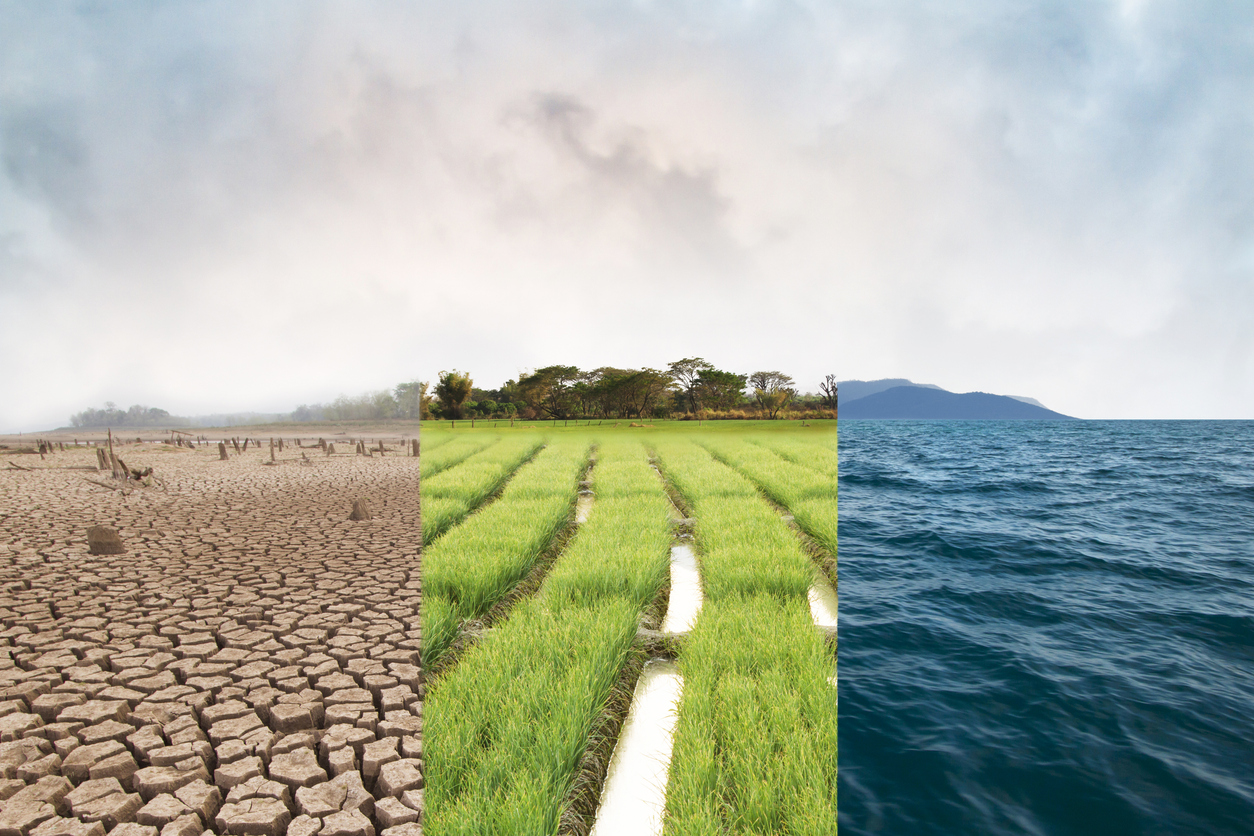A new generation of mathematical modelers might be able to help defuse a looming insurance crisis.
Floods, electrical storms and wildfires, together with raw-material inflation, are pushing up premiums for so-called catastrophe insurance. Some Americans are moving away from riskier places such as Florida, while others are foregoing cover. Insurers such as Allstate, State Farm and Farmers Insurance, owned by Zurich Insurance Group, are withdrawing from disaster-prone areas.
For insurers, average annual losses—a conceptual long-run estimate of future losses—could reach a record $133 billion, according to risk-assessment firm Verisk Analytics.
Uninsured losses will be even higher. In North America, only 51% of natural-catastrophe risk is covered. In Europe, it is 44%, and in Asia a paltry 12%.
The fear is that more areas could become uninsurable. Underwriting requires confidence that models somewhat accurately reflect risks, which climate change is amplifying in scary, unknown ways.
Most climate forecasts come from two different sources. The first is the “general circulation models” used by bodies such as the Intergovernmental Panel on Climate Change, which base forecasts on the laws of physics. They are good at mapping big trends, but not at predicting localized phenomena or simulating hurricanes and tornadoes.
Conversely, “catastrophe risk,” or CAT-risk, models use historical data to infer the future probability of hurricanes, earthquakes and the like, as well as the vulnerability of buildings and structures. They became all the rage after Hurricane Andrew hit the U.S. in 1992, sending 11 insurers into bankruptcy. Verisk is the main provider of CAT-risk models, with RMS—acquired by Moody’s – in second place.
This approach has had successes: When Hurricane Katrina hit in 2005, no insurers went bust. But CAT-risk models aren’t good at reading the smaller-scale events that have caused havoc this year. Climate change is another challenge: Using data going back to the 1960s, when the climate was cooler, will lead to underestimates of rainfall. Yet placing the cutoff at, say, the 1990s, limits the information available for forecasts.
Forecasters are starting to marry both methods, with some startups promising transformative results.
Australian venture Reask, for example, has built a layer of physics into its statistical models of tropical cyclones. Its simulations, based on mining environmental data for patterns using artificial intelligence, generate climate-adjusted catastrophe probabilities for any given year. Seasonal patterns that climate models have struggled to forecast, such as the oscillation between wet El Niño and dry La Niña seasons, may become clearer.
The global reach of companies such as Reask helps bring insurance to undercovered places. In 2021, it became a partner in Swiss Re’s program to expand so-called parametric insurance outside of its core U.S. and Caribbean markets. These policies are easier to implement because payouts depend on weather metrics rather than labor-intensive damage assessments.
Other startups specialize in disasters that are too unpredictable for many insurance policies, with protection often depending on limited government support. U.K.-based CatRisk Solutions, for example, provides an earthquake-loss model covering 155 countries.
Flooding is also very hard to model, but better data could help. Satellite imagery and databases with the exact position of buildings, the materials used in their construction and the cost of past repairs are replacing more generic district-level information.
“We now know that it’s really important to understand whether you are 100 feet or half a mile from the sea,” said Russell Merrett, Chief Underwriting Officer at Inigo Insurance, a Lloyd’s of London syndicate that specializes in high-risk reinsurance.
In 2020, New York-based First Street Foundation released an online application where anyone can check their property’s flood exposure. It suggested that federal maps severely underestimate risks.
The rising cost of disasters is more about population increases in hazardous areas than climate change itself. Inigo’s research suggests that demographic shifts have caused more than a doubling in expected annual losses since 1970, compared with a 25% increase from climate change.
Although data is improving, high-resolution flood models must often plug information gaps with complex mathematical calculations. Bristol-based Fathom trains models with data on rainfall, river behavior and tides where available, to infer how floods behave in similar places across the globe.
Crucially, computing costs are no longer prohibitive for startups. Dag Lohmann, Chief Executive of California-based KatRisk, said the possibility of reserving time at an expensive Energy Department supercomputer was a game-changer. “Suddenly, a relatively small company like ours could jump ahead of the queue,” he said.
Another historical weakness of catastrophe-risk underwriting was that insurers placed each disaster type and region in its own category. In reality, cyclones lead to floods, and hurricanes in the U.S. can be linked to Australian wildfires. Last year, Reask and Fathom joined to create models that account for these correlations.
The upshot of all this innovation is that risk-modeling startups are increasingly being used for second opinions, particularly by specialist reinsurers and investors. They are also benefiting from surging demand for “climate ratings,” which sit alongside traditional credit ratings when municipal debt is issued or infrastructure projects are pitched.
Every revolution has a downside: A Wild West of models of varying quality are making the rounds. Some hide their assumptions within “black box” methodologies. Excessive certainty can also be a problem. First Street’s flood map may have uses for insurers and builders, for example, but the claim that it can pinpoint property-level risk with precision is unproven. Researchers at Fathom, which built the flood model used by First Street but has since broken off the relationship, warned in a 2021 paper that the accuracy of predictions made by these types of models remains hard to assess.
Given how much money insurers have at stake, though, they will likely use all the help they can get. A golden age is dawning for climate modelers.














